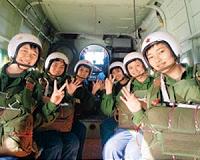 |
New York, NY (SPX) Nov 24, 2010 From fad diets to exercise programs, Americans continue to fight the battle of the bulge. Now they'll have help from recent Tel Aviv University research that has developed a new method to look at how fat cells - which produce the fat in our bodies - respond to mechanical loads. This might be the key to understanding how to control the amount of fat produced by fat cells, the holy grail of weight loss researchers, says Prof. Amit Gefen of Tel Aviv University's Department of Biomedical Engineering. His research is driven by the theory that fat cells, like bone or muscle cells, are influenced by mechanical loads, defined as the amount of force or deformation placed on a particular area occupied by cells. By recreating the structure of fat cells using a newly-developed computer method, Prof. Gefen and his team of researchers can determine how much mechanical load can be tolerated by fat cells, and at what point the cells will begin to disintegrate. The research, recently reported in the Journal of Biomechanics, has direct applications in weight loss programs, the treatment of bedsores and the management of chronic diabetes.
Bones in space, fat on the ground The structures of their bones and muscles, which are determined by the cells that produce these structures, are weakened due to a lack of mechanical loads. This occurs because cells are deprived of "normal" mechanical stimulation, like walking. Prof. Gefen believes that, much like bone or muscle cells, fat cells are also affected by mechanical loads. His new computer model takes slices of laser confocal microscopy images of cells and reconstructs a whole, virtual version of an individual cell, allowing researchers to evaluate how that cell will respond to different mechanical stimuli. "We use these computer models to see how cells function under mechanical loading, much like simulations in structural engineering are used to test the strength of bridges or machines," he explains. After assembling their "virtual" fat cells, Prof. Gefen and his group found that fat cells or lipids have a point where mechanical loads can disintegrate them, as well as a point at which they are able to resist disintegration. Prof. Gefen is now trying to determine the specific load magnitudes and frequencies for fat cells, perhaps using ultrasound at a supersonic frequency to vibrate the tissue.
Not all infomercials are light-weight Such information could be crucial to the future of our health, he says, noting that diabetes and obesity rates are rising. "Any treatment that would be effective in fighting obesity would also apply immediately to diabetes," he explains. The next step for Prof. Gefen and his fellow researchers is to pin down the mathematical equations that allow for the dissolving of lipid droplets, then predict what a fat cell will do under certain levels of force. This will lead to better information on how to use mechanical loads to control the production of fat by fat cells - whether this means applying a certain frequency of ultrasonic vibration, or simply spending more time in the gym.
Share This Article With Planet Earth
Related Links Tel Aviv University Space Medicine Technology and Systems
 Space Travel Is Bad On The Bones
Space Travel Is Bad On The BonesAtlanta GA (SPX) Nov 09, 2010 Long-duration spaceflight may have a long-term negative impact on bone health, according to research presented this week at the American College of Rheumatology Annual Scientific Meeting in Atlanta. Exposure to microgravity (also known as weightlessness) during spaceflight results in rapid bone loss. Researchers recently set out to determine the impact of long-duration space missions on lo ... read more |
|
| The content herein, unless otherwise known to be public domain, are Copyright 1995-2010 - SpaceDaily. AFP and UPI Wire Stories are copyright Agence France-Presse and United Press International. ESA Portal Reports are copyright European Space Agency. All NASA sourced material is public domain. Additional copyrights may apply in whole or part to other bona fide parties. Advertising does not imply endorsement,agreement or approval of any opinions, statements or information provided by SpaceDaily on any Web page published or hosted by SpaceDaily. Privacy Statement |